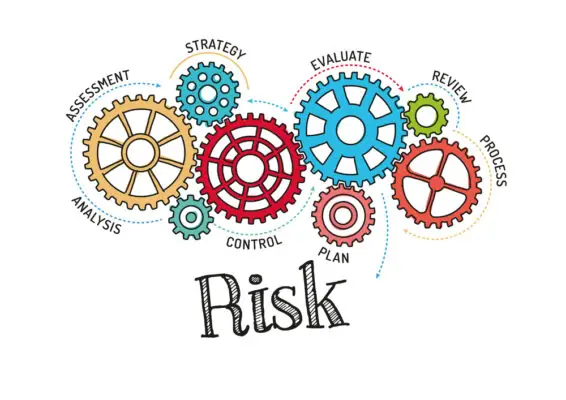Validation risk management is the process of identifying and mitigating risks associated with validation activities. It’s a vital part of any compliance program, as it helps ensure that validation activities are carried out effectively and efficiently. The goal of validation risk management is to ensure that potential risks are identified and mitigated before they have a chance to cause problems.
In the validation risk management process, it is important to assess any potential risks before implementing any changes or new procedures. This means taking a comprehensive look at all aspects of the process and identifying any possible problems that could arise.
This includes analyzing the entity itself, its environment, and how it interacts with external factors. Risk assessment also involves assessing the likelihood and severity of these potential issues, as well as determining any preventive measures that can be put in place.
The goal of risk assessments is to identify and prioritize potential risks in a product or process, resulting in a more efficient allocation of resources for addressing these risks. This involves gathering data, analyzing the likelihood and potential impact of each identified risk, and determining appropriate mitigation plans.
Risk assessment also helps to ensure compliance with regulatory standards by identifying where additional steps may be necessary to meet these requirements. Validation is one of the risk-based approach that uses failure mode effect analysis. Risk assessment examples include testing the safety of drugs by doing lab studies.
This crucial step helps to ensure that the process is efficient and effective, minimizing the chance of negative outcomes and ensuring compliance with regulatory guidelines. In summary, thorough risk assessment is a vital part of successful validation risk management.
In business, there is always some level of risk that comes along with any decision made. This is especially true in the world of technology, where changes and innovations happen at a rapid pace. One key part of validation risk management is understanding and mitigating validation risks. But what exactly is the validation risk management process? And why is it so important? Keep reading to find out!
Quality risk management
A key component of successful validation risk management is quality risk management. This involves identifying, assessing, and managing potential risks to product quality throughout the entire manufacturing process.
Quality risk management helps to ensure compliance with regulatory guidelines, as well as minimize costly product defects or recalls. It includes setting defined acceptance criteria, training staff on proper processes and procedures, conducting regular audits and inspections and continually monitoring and improving upon processes.
Effectively incorporating quality risk management into validation protocols can lead to a smoother manufacturing process and improved product outcomes. It is an integral part of maintaining a strong quality control system.
Risk assessment
The risk assessment process is an important component of validation risk management in any industry. This process involves identifying potential risks, determining the likelihood and severity of each risk, and taking steps to mitigate or eliminate those risks.
An effective risk assessment requires comprehensive analysis and input from all relevant parties, including research and development, manufacturing, quality control, and regulatory affairs. The outcome of the risk assessment should inform the overall validation plan for a product or process.
Additionally, by addressing potential risks through a thorough risk assessment process, companies can ensure that their products and processes meet regulatory requirements and maintain customer satisfaction.

Process validation
In the production and manufacturing industries, process validation is a critical component of validation risk management. This process involves determining if a specific production method or process consistently produces a product that meets all predetermined specifications and quality requirements.
In other words, it ensures that the process can reliably be reproduced to produce consistent results. There are three main stages of process validation: initial process design and development, process qualification, and ongoing monitoring and reassessment.
Each stage has its own set of objectives and measures for success, with the ultimate goal being to ensure consumer safety and satisfaction with the finished product. Keeping processes validated helps to identify and address potential problems before they become major issues, making it an essential aspect of any successful validation risk management plan.
Risk assessment processes and steps need to be followed from risk identification, risk analysis, risk evaluation, and risk mitigation activities. Production processes or the entire process will be subjected to risk-based validation effort. Relevant stakeholders must also be involved especially if the product is a high risk.
Process Design
Process designs involve developing and recording processes’ knowledge. It should be identified, tested, and documented in production and testing documents. The development phase of new products should have fewer delays than the previous development phase under the current cGMP.
However, there is a need for scientific methods and principles, including good documentation practices (GDP). There are no regulations required to facilitate the process. Nevertheless, the combination of circumstances that involve high process risks can be identified.
Validation Test Plan
The new directive on process validation provides scientific evidence that a process can consistently deliver quality products. This has resulted in testing is divided into three stages. Data from laboratories or pilots are intended for this purpose.
Risk analysis tools can be used in the validation effort and also for risk control attributes. How much validation is to ensure parenteral drug association that patient safety is taken into place thus meeting regulatory expectations?
Qualities of an objective assessment of critical quality attributes of process development by use of statistical methods are crucial.
Validation. Priority level
Once you determine what is critical for individual functional items in URS, you can build validation strategies for each functional category.
Why is Validation Risk Management Important?
It can help save time and money. Consider the following scenario: A company has developed a new product, and they want to ensure that it meets all relevant regulatory requirements before putting it on the market. In order to do this, they must carry out a series of validation tests.
If the company does not have a robust validation risk management program in place, it may spend considerable time and resources conducting tests that are either unnecessary or not fit for purpose. This not only wasted time and money but also delays getting the product to market—which can have a negative impact on the bottom line.
Conversely, a well-managed validation risk program will help ensure that only necessary tests are conducted and that those tests are carried out effectively so as to minimize regulatory risk.

How to Implement Validation Risk Management Programs
Validation risk management programs should be tailored to the specific needs of the organization. However, there are some general best practices that all organizations should follow when implementing such programs:
1) Define clear objectives and goals for the program.
Any successful program or project must have clear, measurable objectives and goals in order to track progress and ensure success. In the context of implementing a validation risk management program, this means setting specific targets for mitigating or eliminating risks, as well as determining how often and under what circumstances these risks will be re-evaluated.
Goals should also include timelines for when certain actions will be taken and when results should be achieved. Without clearly defined objectives and goals, it is impossible to properly assess the effectiveness of the program and make necessary adjustments.
Additionally, stakeholders need to understand exactly what the program aims to accomplish in order to support its implementation and achievement of goals. Setting clear objectives and goals is an essential part of launching a successful validation risk management program.
2) Conduct a comprehensive assessment of risks associated with validation activities.
Before initiating a validation program, it is important to conduct a thorough assessment of risks associated with the activities.
This includes identifying potential risks during each stage of product development, from design to manufacturing and distribution. These risks can be categorized based on factors such as regulatory requirements, technical capabilities, and company resources.
It is also important to consider the impact that these risks could have on product quality, compliance, and overall business operations. This information can then be used to develop a comprehensive risk management program for the validation process.
Ongoing monitoring and evaluation should also be incorporated in order to continuously mitigate any potential risks throughout the entire product lifecycle.
3) Develop mitigation strategies for identified risks.
it is important to identify and mitigate potential risks. One way to do this is through regular meetings with all involved parties, including management, operations staff, and external stakeholders. Here, potential risks can be identified and discussed, and strategies for prevention can be developed.
In addition, regularly scheduled walkthroughs of the facility can also help to identify potential risks and implement necessary mitigation measures. It is also important to have clear communication channels in place so that any concerns can be raised immediately and addressed promptly.
4) Implement controls to monitor and track compliance with the program.
In order to ensure the success and efficacy of a validation risk management program, it is essential to implement controls to monitor and track compliance with said program. This can include regular audits conducted by external sources, as well as internal assessments and reviews.
The collected data can then be analyzed and used to identify any areas of improvement or non-compliance in the program. Additionally, having a designated team or individual responsible for overseeing this monitoring process can help to ensure that it is carried out effectively and efficiently.
Implementing these controls not only helps to maintain adherence to the program but also serves as a valuable tool for continual improvement. Overall, incorporating these controls into the validation risk management program is vital for ensuring its success.

5) Regularly review and update the program in response to changes in the regulatory landscape or business operations.
In a constantly-changing regulatory landscape, it is important to regularly review and update a validation risk management program. This helps ensure that the program remains effective and compliant with current regulations.
Additionally, as business operations evolve, the program should be updated to reflect changes in processes or products. This can involve updating validation protocols and conducting new risk assessments.
A robust program not only protects the organization from potential non-compliance issues, but also allows for potential improvements to operations and efficiency. Regular review and updates are instrumental in maintaining an effective validation risk management program.
Conclusion
Validation risk management is important in order to ensure the safety and efficacy of regulated products. In order to manage validation risks, a process must be put into place that includes planned and systematic actions.
This process should involve all members of the organization who are responsible for product development, manufacturing, quality control, and regulatory affairs. Through this process, organizations can minimize the probability of making errors during product development and manufacture. What do you think is the most important aspect of validation risk management?

Chris Ekai is a Risk Management expert with over 10 years of experience in the field. He has a Master’s(MSc) degree in Risk Management from University of Portsmouth and is a CPA and Finance professional. He currently works as a Content Manager at Risk Publishing, writing about Enterprise Risk Management, Business Continuity Management and Project Management.

